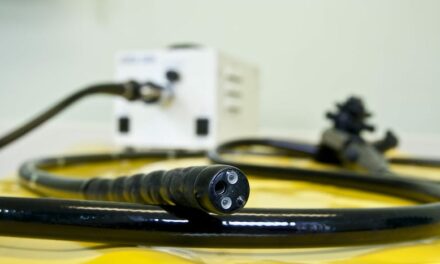By Arthur Zenian
Oxygen concentrators date back as far as the early 1800s, but it took quite a while for them to find use in medicine, and longer still for the machines to take the form of the refined designs we use today. Here’s what you should know about these devices.
Advantages of Oxygen Concentrators
Both portable and home oxygen concentrators provide numerous advantages to those patients needing oxygen therapy. They are much less dangerous than traditional oxygen cylinders, which can, if ruptured or leaking, cause or increase the combustion rate of a fire. Oxygen concentrators, on the other hand, pose no such danger. This is one reason home and portable oxygen concentrators that can “make” their own oxygen have become more popular and widely used than old-fashioned oxygen tanks.
The other main benefit is the ease and increased ability to be mobile with oxygen. Portable oxygen concentrators provide the necessary oxygen anywhere the user goes, even on airplanes. The Federal Aviation Administration (FAA) has ruled that all passengers who require oxygen must be allowed to bring FAA-approved portable oxygen concentrators on all U.S. aircraft.
How Does an Oxygen Concentrator Work?
An oxygen concentrator suctions air, purifies it, and then distributes the newly formed air to the patient. Before it goes into the concentrator, air is made up of 80% nitrogen and 20% oxygen. It comes out as 90% to 95% pure oxygen and 5% to 10% nitrogen. The nitrogen is separated to provide the patient with the highest dose of oxygen possible. Although the concept is simple, the process occurring inside the machine is a bit more complicated.
Turning Air into Oxygen
There are many parts that make up a portable oxygen concentrator. Two of the main components are the compressor and the sieve bed filter. The compressor of course compresses air that is filtered into the concentrator, and then it delivers the air in a continuous stream. The compressed air moves to the sieve bed filters. The sieve bed filter plays an important role, as it is the device that removes the nitrogen from the air. This is thanks to a material in the sieve bed called Zeolite, which is a six-sided microscopic cube with holes on each side.
Two sieve beds are located in the concentrator. After air is first compressed in the concentrator, it is forced into the first sieve bed. Oxygen is sent into the product tank. The first sieve bed then gets filled up with nitrogen. Next, the gas flow is switched, and the compressed air is moved to the second sieve bed. The first sieve bed’s compressor is sent to the outside room, and the air from the product tank goes back into the first sieve bed.
The combination of the drop in pressure from the first sieve bed and the weakening of oxygen makes the Zeolite release nitrogen. The oxygen and nitrogen come back together and are released in the room as regular air. The air is then compressed and sent to the second sieve where oxygen is moved through it to the product tank. The whole cycle starts over again with the first sieve after a few seconds.
Other important portable oxygen concentrator parts include the cooling system that keeps the portable oxygen concentrator from overheating, and the nasal cannula that delivers the purified oxygen after the oxygen has been passed through all the sieve bed filters. The cannula helps improve oxygen absorption.
But how did this technology come about? It took innovative contributions from a series of people across two centuries.
Developing the Technology
Oxygen, the element, wasn’t even discovered until 1772, by Swedish chemist Carl Wilhelm Scheele. Scheele, unfortunately, was beaten to the punch by Joseph Priestly. This English chemist, despite not “discovering” the oxygen molecule until 1774, published his findings three years earlier than Scheele. That being said, Scheele is still recognized as being the first to figure out what oxygen is.
It took a little less than 100 years for scientists and doctors to understand how to use oxygen to help those with varying illnesses and diseases. In 1885, the first-ever recorded use of oxygen for a medical purpose was documented. Dr. George Holtzapple pioneered and administered a revolutionary procedure to treat a patient with pneumonia. Just two years later, a product was invented and sold that stored enough oxygen for intermittent use.
It wasn’t, however, until 1917 that Jon Scott Haldane invented the gas mask to protect and treat soldiers who had been affected by dangerous chlorine gases during the First World War.
For decades, oxygen was mainly used in hospitals to treat patients with a variety of respiratory issues. Then in the 1950s the first form of portable medical oxygen therapy was invented. It was used strictly in ambulances and on the scene of medical emergencies.
The 1970s was a revolutionary decade for medical-grade oxygen therapy. Finally, you could own your own oxygen therapy unit in your home! The equipment was readily available from suppliers that delivered tanks to people’s residences, but the tanks were much larger than those today. This advancement in oxygen therapy was extraordinary due to the fact that the concentrator purified oxygen within itself. As you can imagine, it was also extremely big and heavy.
Over the next 30 years, oxygen concentrators began to shrink in size. Now we have the much-improved technology used the world over for oxygen therapy today.
Arthur Zenian is CEO of enBio Corp. based in Burbank, Calif. Questions and comments can be directed to 24×7 Magazine chief editor Keri Forsythe-Stephens at [email protected].
The 5 Step Oxygen Concentrator Process
- Takes air from the room.
- Compresses the oxygen.
- Takes nitrogen out of the air.
- Adjusts the way the air is delivered.
- Delivers the purified air.





